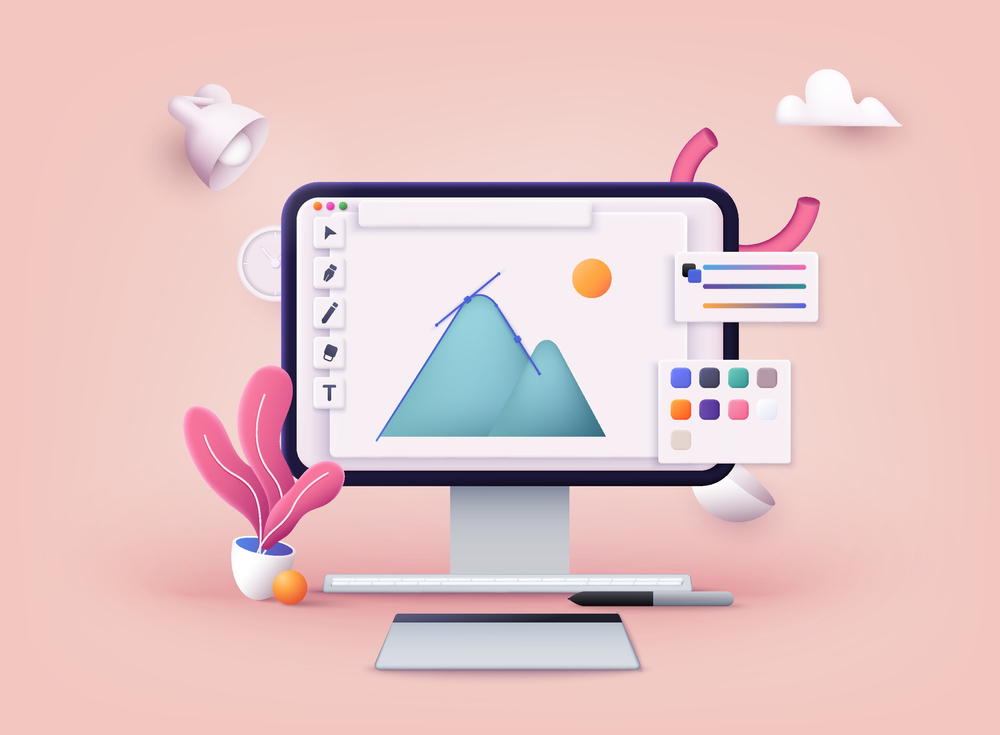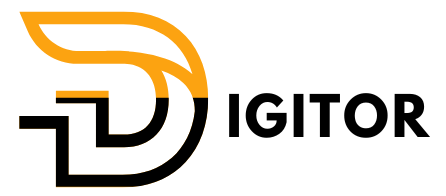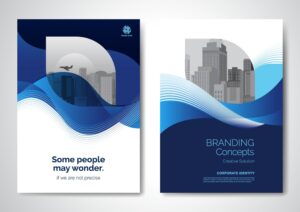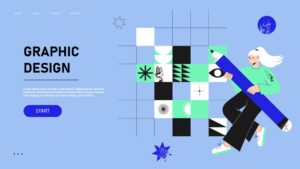The Role of Graphic Design in Effective Visual Communication
Introduction
In a world dominated by visuals, graphic design has become an essential tool for effective communication. Whether it’s a business promoting its products, a non-profit raising awareness, or an individual expressing creativity, graphic design plays a crucial role in conveying messages visually. This blog explores how graphic design enhances visual communication, making complex ideas more accessible and engaging.
Understanding Visual Communication
What is Visual Communication?
Visual communication is the process of conveying ideas and information through visual elements. It includes everything from images and symbols to typography and layout. Unlike verbal communication, which relies on words, visual communication uses visuals to convey messages quickly and efficiently. In today’s fast-paced world, where attention spans are short, effective visual communication is more important than ever.
Why Graphic Design is Essential
Graphic design is the art and practice of planning and projecting ideas and experiences with visual and textual content. It’s the backbone of visual communication, transforming ideas into visual forms that resonate with audiences. A well-designed graphic can capture attention, convey a message, and evoke emotions—all within a matter of seconds.
Key Components of Graphic Design in Visual Communication
1. Imagery and Symbols
Images and symbols are powerful tools in graphic design. They can convey complex ideas quickly and without the need for words. For example, a simple icon can represent a whole concept, such as a heart symbol for love or a lightbulb for ideas. In visual communication, using the right imagery can make a message more impactful and easier to understand.
2. Typography
Typography is the art of arranging text in a visually appealing way. The choice of font, size, spacing, and color can significantly impact how a message is perceived. In graphic design, typography is used not only to present information but also to evoke certain emotions or emphasize particular points. Consistent and thoughtful use of typography enhances the clarity and effectiveness of visual communication.
3. Color Theory
Color is one of the most influential elements in graphic design. Different colors evoke different emotions and can influence how a message is received. For example, blue is often associated with trust and calm, while red can evoke energy and urgency. Understanding color theory allows graphic designers to use color strategically in visual communication to align with the intended message.
4. Layout and Composition
The layout and composition of a design refer to how visual elements are arranged on a page. A well-composed layout guides the viewer’s eye through the content in a logical and engaging way. It helps prioritize information, ensuring that the most important elements are seen first. Effective layout and composition are key to making visual communication clear, organized, and aesthetically pleasing.
How Graphic Design Enhances Visual Communication
Simplifying Complex Information
One of the primary roles of graphic design in visual communication is to simplify complex information. Through the use of infographics, charts, and diagrams, graphic designers can break down intricate data into easily digestible visuals. This makes it easier for audiences to understand and retain information, even if the subject matter is complex.
Creating Emotional Connections
Graphic design has the power to evoke emotions and create connections with the audience. Whether it’s through the use of color, imagery, or typography, design elements can be crafted to elicit specific emotional responses. For example, a warm color palette and friendly font might create a sense of comfort and approachability, while bold colors and sharp lines might evoke a feeling of strength and urgency.
Enhancing Brand Identity
Graphic design is also crucial in establishing and reinforcing a brand’s identity. Consistent use of design elements, such as logos, colors, and fonts, helps create a recognizable brand image. This consistency in visual communication ensures that every interaction with the brand is cohesive and reinforces the brand’s message and values.

Improving User Experience
In digital media, graphic design plays a critical role in user experience (UX). A well-designed website or app is not only visually appealing but also easy to navigate and use. Good graphic design enhances the user experience by making interfaces intuitive, ensuring that users can interact with the content seamlessly.
Conclusion
Graphic design is a powerful tool in communication, making it possible to convey messages clearly, effectively, and emotionally. From simplifying complex information to enhancing brand identity, graphic design plays a crucial role in how messages are received and understood. By leveraging the key components of graphic design—imagery, typography, color, and layout—you can create visual communications that resonate with your audience and leave a lasting impression. Ready to elevate your visual communication through expert graphic design? Contact us to start your project today.
For more insights on the role of graphic design in communication, check out Smashing Magazine for design tips and trends, or visit AIGA for resources and inspiration in the world of design.







